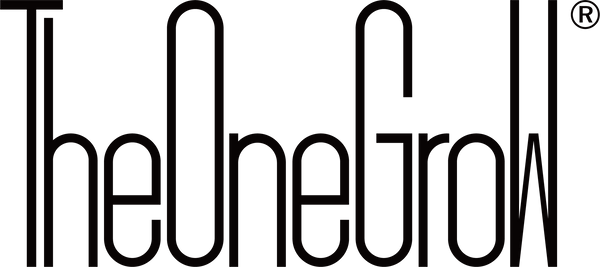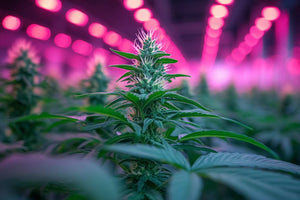
Knowing how much marijuana needs to be healthy, thriving and productive seems to be one of the foundations of success.
Light is an important condition for photosynthesis and many metabolic processes in plants. In this case, the ratio of the average consumption and the effective luminous flux required for the normal development of a factory is 3-4 000 lumens per square foot (30x30cm). However, since most growers do not have an illuminance meter, the intensity of the light emitted by the lamp itself does not provide enough information (light efficiency is more important), so it is easier to focus on the wattage of some lamps.
Lighting options for hemp
The grower determines the plant's demand for light and provides the required light. The calculation should take into account the stage of the cannabis life cycle and the growth conditions and characteristics:
-
The size of the bush or the area occupied by several cultivated bushes.
-
The type of lamp used.
-
The light is located above the top of the plant, and it represents the distance from the top to the light.
-
Based on the expected harvest volume of the selected lamp, the yield of a specific variety (considering the selected lighting power), the number of bushes (for the planned harvest volume).
-
The relationship between light power and cannabis lamp type.
Modern growers can use three main types of artificial light sources:
grow lamps weed
-
HPS lamp (sodium gas discharge).
-
ESL (Energy Saving).
-
LED (diode).
They are suitable for growing both individually and in groups, each type possessing its unique features, strengths, and weaknesses that should all be taken into account.
HPS lights are arguably the most popular choice. They are potent light sources with a broad spectrum, especially rich in warm, red rays which are crucial for cannabis root development and maturation. However, these lights produce significant heat, requiring a cooling system with continuous air supply and exhaust, adding extra costs. Typically, an HPS lamp of 150-250 W suffices for a medium-sized plant, while a 400-600 W lamp is necessary for a 1 m² area, and a 1000 W lamp can cover an area of 1.2-1.3 m².
FCL lamps, or fluorescent lamps, are smaller and more energy-efficient. They emit a "cold" blue and green spectrum, essential for plant growth during the vegetative phase. These lamps do not generate much heat but also produce less light energy, necessitating more powerful options or combinations of 2-3 or more lamps. For a medium-sized plant, 250-400 W lights are needed. For a 1 m² growth box, at least two 400 W ECL lamps or four 250 W lamps are recommended for uniform lighting.
LED grow light produce virtually no heat and can be positioned very close to plants. They are highly efficient, long-lasting, and compact, but they have limitations in their emission spectrum and light output. It is recommended to use specialized Phyto-LED lamps that offer a broader spectrum and higher brightness, although they come at a higher cost. Typically, a 115-180 W LED lamp is adequate for a single plant, while a 360-530 W lamp is sufficient for larger setups.
The effectiveness of the lighting is influenced by both the power of the lamp and the distance from the plants.
Calculate the light of cannabis
The efficiency of the luminous flux consumed by the device depends to a large extent not only on the type and power of the lamp used but also on the distance between the lamp and the device. The closer the light source, the stronger the luminous flux. However, due to the risk of light burns on the leaves, even temperature-safe LED lights should not be placed too close.
HPS and ESL will preheat (especially HPS), so it is important to place the light source on the top of the lampshade within a safe distance to maintain lighting efficiency:
HPS 600 W should be located 60 cm above the bush (this distance must be considered when designing and equipping planting boxes and selecting varieties based on size).
It is sufficient to place the 360 W LED lamp just 20 cm above the bushing.
The height of the lamp should be adjusted as the bushing grows to maintain the best distance.
The relationship between optical power and bushing size
When selecting a lamp for a planting box and setting up the lighting, it is essential to consider the size of the cannabis variety. Varieties can range from short (up to 40 cm), medium (70-80 cm to 1.5 m), to tall (up to 2 m indoors without LST and ScroG methods). The bulbs chosen must have sufficient power and quantity to illuminate the entire growth area, ensuring all branches receive adequate light.
To determine the light needed for growing hemp, start with a baseline of at least 20 watts (covering 30x30 cm) per square foot. The minimum effective luminous intensity for such a setup is 2000 lumens. Achieving this requires an HPS lamp of 50-70 W, an ESL lamp of 100-150 W, or an LED lamp of 45-70 W. Larger boxes will need more light, and for substantial bushes, additional diode lights can be installed on the box walls as they do not produce heat.
You can adjust the height of the lowest bush to ensure all tops are at the same level, promoting even light distribution.
Dependence of lighting power on cultivated land
Calculate the light of cannabis
Usually, in order not to stretch the growth box upwards, growers use green screening (ScroG) and low intensity training (LST) methods to stretch shrubs horizontally (especially medium and high varieties). The level of "green" areas that require lighting increases. For effective lighting of at least 1 square meter, you need:
HPS lamps 400-600 W, but better than two 150-250 W lamps, and require effective ventilation to cool the intense heat (HPS lamps up to 400°C and DRI lamps up to 700°C).2 ECL lamps, 250-400 watts each. Since it is heated to 60-70°C, it also needs cooling.2 LED lights 115-180 W or 1530 W.
In order to increase the efficiency of the light output from the light source to the plants, the reflector can be constructed, for example, using foil. In some cases, this will increase the level of lighting without the need to use more powerful, hotter lights.
Dependence on production indicators
Production index
For growers, it will be helpful to know how to calculate the light of the planting box to provide the required amount of mature crop conditions.
The grower's standard is the relative yield per 1 watt of energy to 1 gram of sprout, but for that matter, this is the standard-not always achievable. When determining the optical power required to obtain a specific crop volume, you can base on this approximation (taking into account all previously stated factors):
Therefore, a good, bright 100 W lamp with a wide emission spectrum will not bring much gain (30-40 grams per square meter).
-
150 W-60-70 grams per square.
-
200 watts-100 grams.
-
250 watts-250 grams
-
400 watts-400 grams
-
600 watts-600 grams
-
1000 watts-1000 grams
However, in order to obtain a more realistic index, it is worth dividing the yield by about 1.5 or creating and maintaining ideal conditions (space, temperature, humidity, soil quality, watering, fertilization, lighting patterns, etc.) and choosing the correct variety….
Conclusion
Only consider all the points about lighting (not only consider the amount of light, but also the required spectral ratio, and consider the stage of plant development), as well as all other conditions (microclimate, soil, watering, disease prevention, etc.), which can improve cannabis Productivity and harvest quality.
FAQ
How much light does a weed plant need?
Cannabis plants require different light intensities by growth stage: seedlings need 100-300 µmol/m²/s PPFD, vegetative stage requires 400-600 µmol/m²/s, and flowering stage needs 600-1000 µmol/m²/s. The optimal photon density for peak cannabis photosynthesis is between 500-700 µmol/m²/s. Photoperiod plants need 18-24 hours of light daily during vegetative growth and 12 hours light/12 hours darkness for flowering .
How much light do weed plants need?
Research shows cannabis begins light saturation at 500 µmol/m² PPFD in ambient CO2, with photoinhibition occurring above 1000 µmol/m² PPFD. Cannabis requires full-sun conditions to flourish, with optimal Daily Light Integral (DLI) values ranging from 15-65 mol/m²/day depending on growth stage. Indoor cultivation typically uses 18/6 light schedule for vegetative growth and 12/12 for flowering phases

